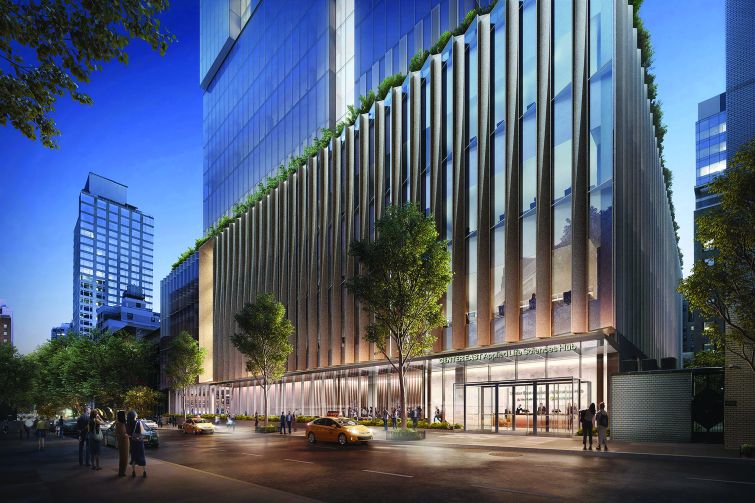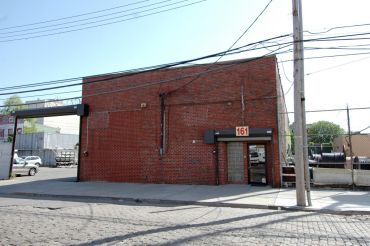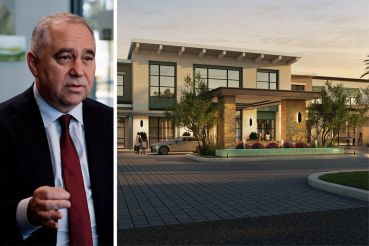City Planning Commission Approves New York Blood Center Rezoning
The project calls to replace the center’s three-story headquarters with a 16-story 'life sciences hub”
By Celia Young September 22, 2021 4:47 pm
reprints
The City Planning Commission (CPC) approved the New York Blood Center’s plans to build a $750 million, 16-story “life sciences hub” at the site of its three-story headquarters in the Upper East Side, pushing the project on to the New York City Council despite opposition from council members and residents.
The CPC voted 8 to 2 on Wednesday to approve the blood center and Longfellow Real Estate Partners’ plan to build a new 596,000-square-foot building at 310 East 67th Street, dubbed Center East, with plans to rent out space to for-profit life sciences companies.
Residents and elected officials have previously raised concerns that the new 310 East 67th tower would add way more space than the blood center needs and would put a neighboring school and park in the shade.
If the project passes the city council’s review, construction could begin in 2022 and be completed as soon as 2026, Commercial Observer reported.
Council Member Ben Kallos, who represents the Upper East Side, was also concerned by the fact that the nonprofit did not initially disclose that the 334-foot tower would include a Biosafety Level 3 Lab for studying agents that can cause serious, or even lethal, infections, The New York Post reported.
“The Blood Center’s expansion plans have been opposed by every local elected official as well as thousands of residents in the community for more than a decade,” a spokesperson for Kallos told CO. “The environmental impacts of this proposed development cannot be mitigated, from shadows on the park and the Julia Richman Education Complex to the creation of new loopholes and the fact that the proposal would include the displacement of thousands of people from 500 apartments.”
The proposal, first announced in October, calls for the blood center to occupy about a third of the space, with Boston-based Longfellow leasing the remainder of the space to three to 10 for-profit companies, the Post reported.
The New York Blood Center argued that the project will bring jobs, affordable blood services to the city’s hospitals, and help the center develop treatments and cures for diseases, according to a statement from the center. Labor leaders like Gary LaBarbera, president of the Building and Construction Trades Council, support the project for creating construction jobs and the Manhattan Chamber of Commerce has backed the project for increasing the burgeoning life science industry’s presence in the city.
“Center East will create 1,570 total construction jobs and is projected to create more than 2,300 new life science jobs, along with an additional 3,000 indirect and induced jobs off-site,” Rob Purvis, executive vice president of the New York Blood Center, said in a statement to CO. “Included in these numbers are medical and clinical lab jobs, which will be among the most in-demand jobs in life sciences over the next decade.”
But others in the city are not so convinced. In May, more than 350 residents submitted written comments ahead of a May advisory vote on the new building, with only two dozen backing the current plan. Many were concerned about the shadow it would cast on nearby St. Catherine’s Park and about the precedent it would set to rezone a midblock residential lot for commercial space, Crain’s New York reported in May.
Others were nervous about the lab space being used for infectious pathogens, though the blood center has said that its current space contains the same lab and has for decades, Crain’s reported. The center has spent at least $175,000 on consulting firm Kasirer to lobby elected officials on its behalf since last year, the Post reported. The firm spent more than $500,000 on legislative lobbying in the 2019 fiscal year, according to public tax disclosures.
“The Blood Center has operated one to two BSL-3 labs in its existing facility without incident since the 1980s, and these labs have for many years been an important research facility for academic and medical institutions in the East Sixties, in other parts of Manhattan, and elsewhere in New York City and around the country,” Purvis said in a statement to CO.
A spokesperson for Kallos also raised the issue of alternative sites, arguing that the blood center had plenty of options for a headquarters on the Upper East Side and Manhattan more generally.
Manhattan Borough President Gale Brewer said during the vote that she was disappointed by the commission’s decision in favor of the plan and urged the council to adjust the application. She has previously called for a shorter building on the site that would not require a rezoning, Crain’s NY reported.
The New York Blood Center’s project is one of the last rezonings left under Mayor Bill de Blasio’s administration, which has dropped about $1 billion into developing the city’s life sciences industry. The decade-long initiative, dubbed LifeSci NYC, invested city funds towards the construction of more lab space and incubators and nonprofits focused on research, CO reported.
Celia Young can be reached at cyoung@commercialobserver.com.


